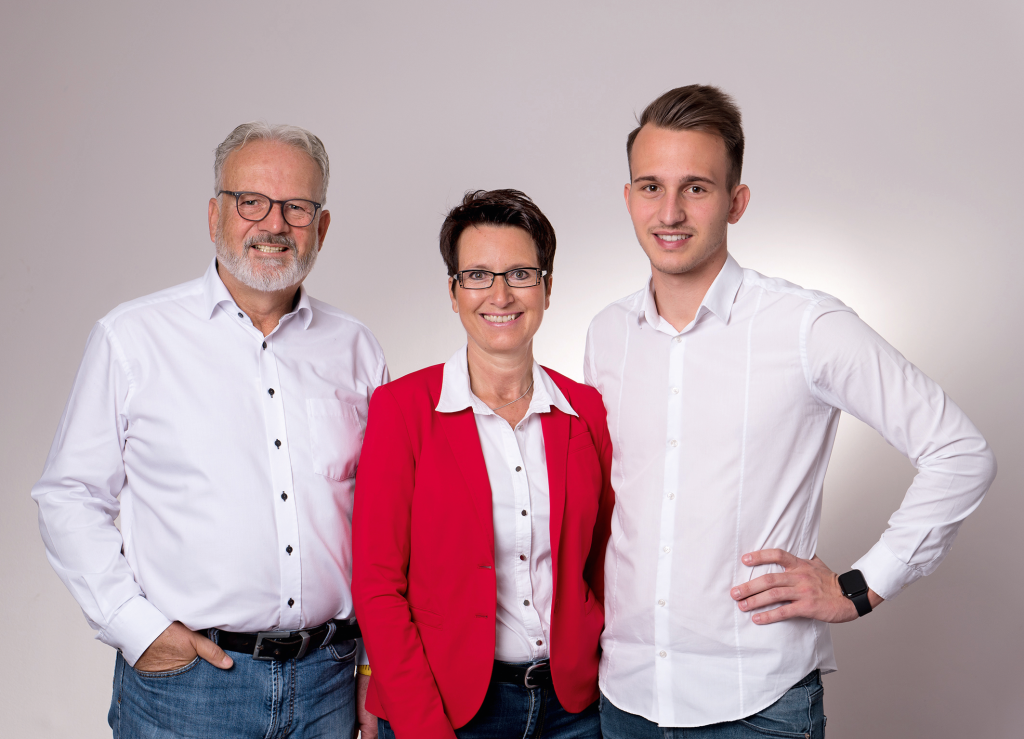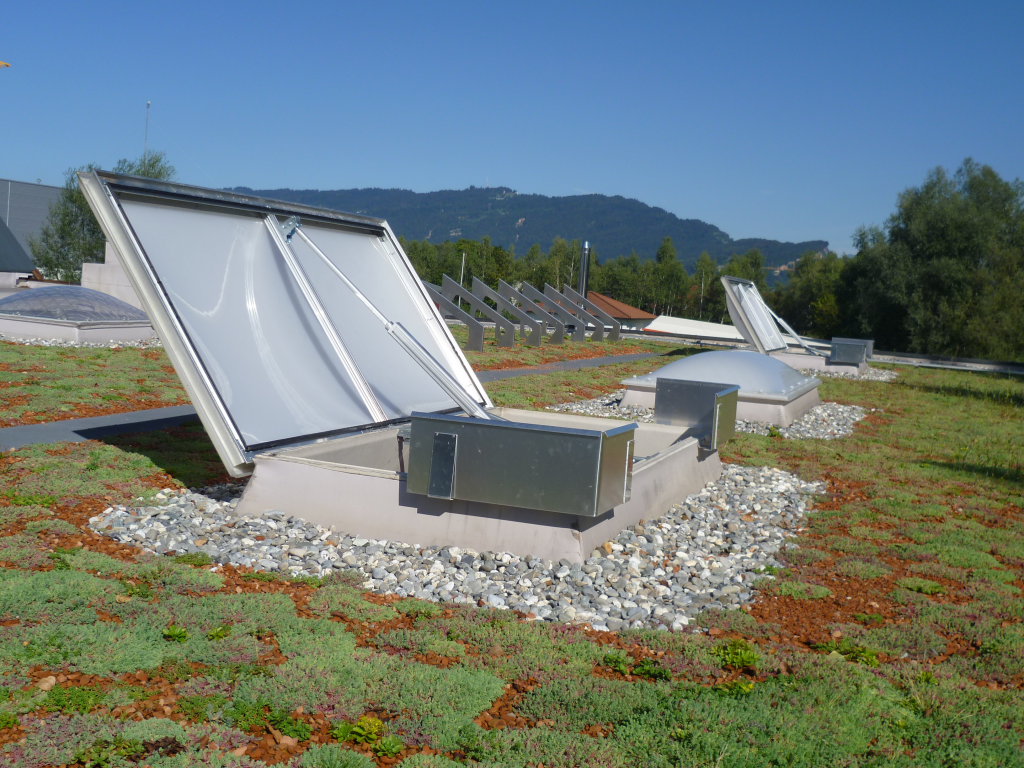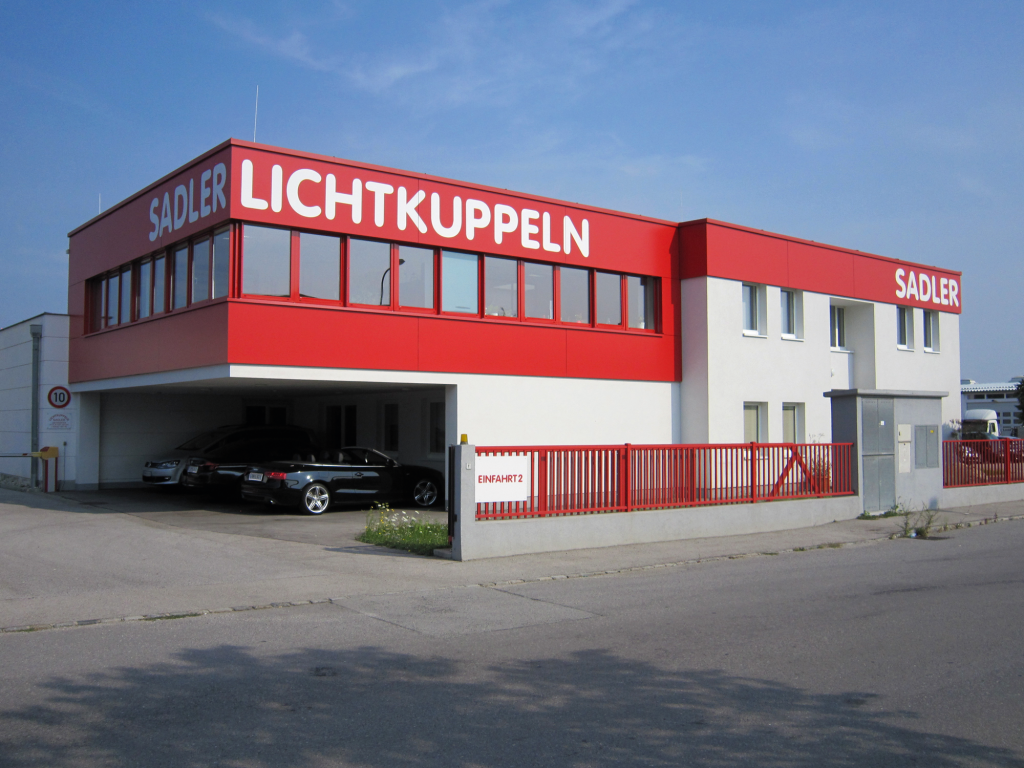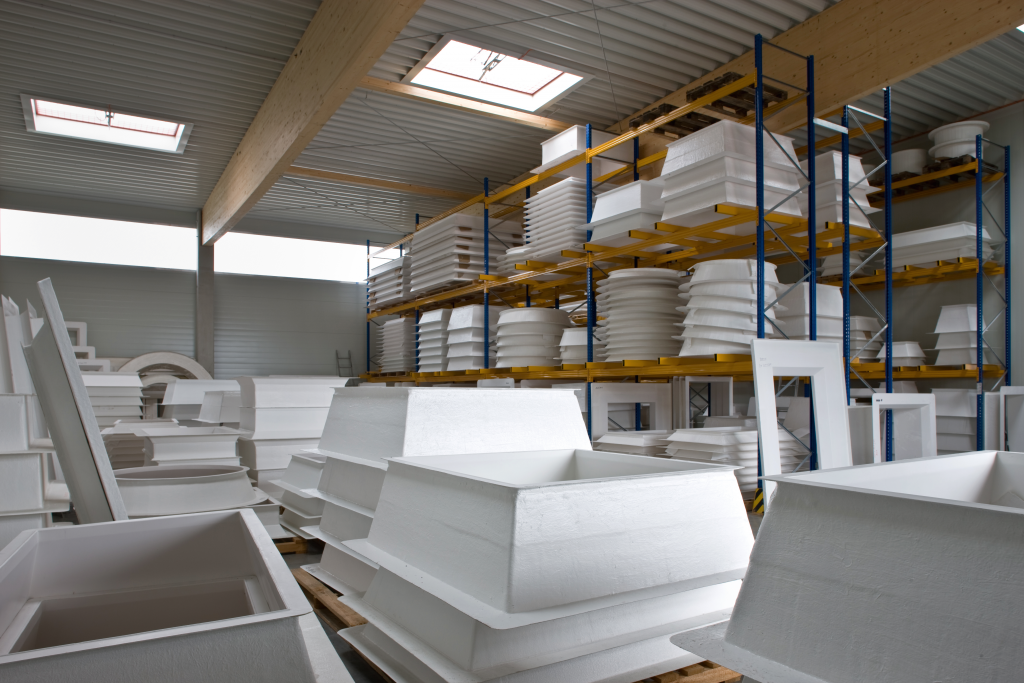Sadler-Lichtkuppeln from Traiskirchen relies on self-generated, green electricity in its production of skylight domes.
The third-generation, family-run company with 35 employees has tackled digitisation and digitised its entire production and order processing. In production, each workstation received a terminal on which orders and work steps are noted. This saves paper and resources, avoids many sources of error, and increases flexibility and efficiency. With several thousand skylight domes sold or renovated each year, the Lower Austrian company Sadler-Lichtkuppeln is the market leader. Managing director Manuela Geyer-Sadler reveals the family’s formula for success.

© Sadler
Your company has been growing steadily since 1969. How do
you ensure economic survival in times of crisis?
Manuela Geyer-Sadler: By having the courage to keep investing in
new ideas, products, buildings and employees. 17 years ago, we
were instrumental in the development of safety nets for skylight
domes and launched a new product on the market. Last year, the
producer of these steel nets was looking for a successor. It was
quite clear to our son that by purchasing this company, the product,
stainless steel safety nets, would be integrated directly into our
company, thus reducing delivery times and distances.
The Sadler company is a classic family business but has always
managed to keep its finger on the pulse. What is the internal interaction
like on a personal, as well as on a professional level?
Geyer-Sadler: As the term family business implies, we are very
connected to our employees. You could say that together we live
the Sadler skylight dome family. Our employees know that we always
have an open ear for their problems. On a personal level, I am
very pleased that the company, which was my father’s lifeblood, is
now secured by our son Daniel, the third-generation successor.

© Sadler
For more than 50 years, your company has been manufacturing
skylight domes, a product that many people do not even notice in
everyday life. Where are your domes used, what are they used for
and how many are there?
Geyer-Sadler: It’s true that people don’t always notice our skylight
domes. But if you open your eyes more consciously, you can see
skylight domes in the staircases of every apartment building. Furthermore,
they are being used more and more in the private sector.
Garages, vestibules or even bathrooms are often equipped with
skylight domes for the purpose of ventilation. The classic applications
are, of course, in industrial halls. Skylight domes are not only
used for daylighting and for ventilating rooms, but they are also a life-saving product. Preventive fire protection is one of the most
important measures that serve to protect life and health, and are
necessary for the preservation of structural facilities. Skylight
domes can be fixed, ventilated or fitted with a smoke and heat
extraction (SHE) system. Since almost 90 percent of all fire victims
do not burn to death but are killed by smoke inhalation, the skylight
dome has become an indispensable part of any fire protection concept.
This is why early detection and targeted containment as well
as smoke evacuation on escape routes are essential for a fire-fighting
attack by the fire brigade. As we manufacture ourselves in our
factory in Lower Austria, we are also equipped for special architect’s
requests. Everything is possible. We sell approximately 6,000
skylight domes a year.
How does the production process work?
Geyer-Sadler: Everything is still done by hand. This also enables
us to respond 100 percent to our customers’ wishes. A purchased
acrylic glass sheet is heated, clamped by means of a wooden frame
and blown up to the desired height with compressed air. That all
sounds quite simple. You just have to remember that a separate
mould is needed for each size of skylight dome. The problem is that
there are hundreds of different sizes, and these wooden models up a lot of space therefore. I won’t even
mention the costs. After the production of the
dome light, the edges are trimmed, cleaned by
hand and glued. There are different ways to
make a skylight dome. Mostly, the outer shell is
produced in the colour opal. This gives a nice
bright, diffuse light without glare. At the customer’s
request, we also use colourless material.
This allows the customer to watch the stars at
night. It also makes sense to use heatstop material.
This is a special material that reflects 68
percent of the sun’s energy, so that the rooms
underneath do not heat up too much. This saves on cooling in the
summer or can at least reduce the necessary cooling considerably.
Skylight domes are produced from single-shell to five-shell. Furthermore,
100 percent of our standard skylight domes for new buildings
are already produced as fall-through-proof domes. For this purpose,
a stainless steel net is installed between the shells of the skylight
dome. This saves subsequent costs and effort. During renovation,
about 60 to 70 percent of skylight domes are currently equipped as
fall-through-proof – people on the roof are thus prevented from
falling through. What many people do not know is that homeowners
are liable for accidents under the Construction Workers Coordination
Act.

© Sadler
Are there sensible alternatives to plastic
domes?
Geyer-Sadler: Today, the only alternative to
skylight domes are glass skylights, which for
cost reasons are only used in residential construction.
For some years now, you have been able to
record double-digit annual sales growth. Why is
there such a demand?
Geyer-Sadler: On the one hand, the building
boom of the last few years has certainly contributed
to this, but also the ever-increasing benefits in the private
sector. Above all, we have specialised in renovation. Due to the
effects of weather on roofs, skylight domes have a service life of
about 25 to 30 years. After that, it makes sense to replace them
with better insulated skylight domes. Furthermore, our company
credo is: He who does not honour the shilling is not worth the penny.
This means that we also take care of customers with only one
to three defective skylight domes.
Do skylight domes help to save energy?
Geyer-Sadler: Definitely. As mentioned, we use a heatstop material
in production that reflects the sun’s rays so that rooms do not
heat up extremely. In residential construction, the Sadler
LIKU-Therm frame is usually installed for cold temperatures, which
improves the U-value enormously. This creates valuable energy
efficiency for the entire building.

© Sadler
What importance does digitisation have in your company
Geyer-Sadler: Digitisation is very important for us. In order to keep
up with the times, our entire production and order processing was
digitised in 2022. This saves paper and resources, avoids many
sources of error, and increases flexibility and efficiency. Production,
however, remains manual labour.
You supply your business with your own electricity?
Geyer-Sadler: Yes, because in addition to digitisation, the sustainability
of the company is also important to us. In 2019, we already
invested in a photovoltaic system on the company roofs. The energy
generated is used directly for our production below, and the rest
is fed into the public supply network as surplus. The ratio of own
consumption versus feed-in is 50:50. With the electricity from our headquarters, we save about 50 tonnes of carbon emissions per
year. The 338 modules covering 558 sqm on our production and
warehouse roofs achieve a maximum output of 95 kWp. This is
about 100,000 kWh per year. In 2023, we will expand this system
on the roof of another hall and thus double our output. You can
therefore say that Sadler produces ‘green skylight domes’.
What challenges do you face with supply chain problems and
rising raw material prices?
Geyer-Sadler: As in all industries in Austria, this
hits us very hard, because it naturally increases
the costing risk, which we cannot pass on to our
customers in full. The problem of getting material
at all is also very big – we are currently
waiting up to four months for acrylic glass. Fortunately,
most of our capital is in our wellstocked
warehouse.

© Sadler
Do you feel the increasing lack of skilled workers and how do
you counteract this?
Geyer-Sadler: This problem hits us hard. We are very proud of our
very large number of long-term employees. But still, we need staff
that we can’t find. We partly counteract this with temporary staff,
who are trained and familiarised by us so that we can integrate
these employees into our company and take them on.
Wouldn’t it be cheaper to relocate production sites abroad?
Geyer-Sadler: No, that was and is not an issue for us. We are a
purely Austrian family business and proud of it!
What major challenges do you see ahead and how will your
company be able to hold its own?
Geyer-Sadler: On the whole, we are positive. The challenges from
the Covid pandemic and also from the Ukraine war will certainly
continue to be present. Since we have specialised
in renovation, we will be able to withstand
this challenge. Nevertheless, it is important
that new construction does not come to a
standstill either. We were nominated in the
2006 Innovation Awards, we celebrated our
50th anniversary in 2019, and I hope we can
have another such great celebration in 2029
with all our customers, suppliers and friends.
At the end of 2022, we took first place in ‘Austria’s
Leading Companies’ in Lower Austria for nationwide operating
companies with a turnover of up to ten million euros. These
are beautiful awards that bind our company together, as we have
achieved these successes together. We are proud of our long-standing
employees, because it is precisely they who make a family
business, and with this valuable capital we will be able to hold
our own even in difficult times.